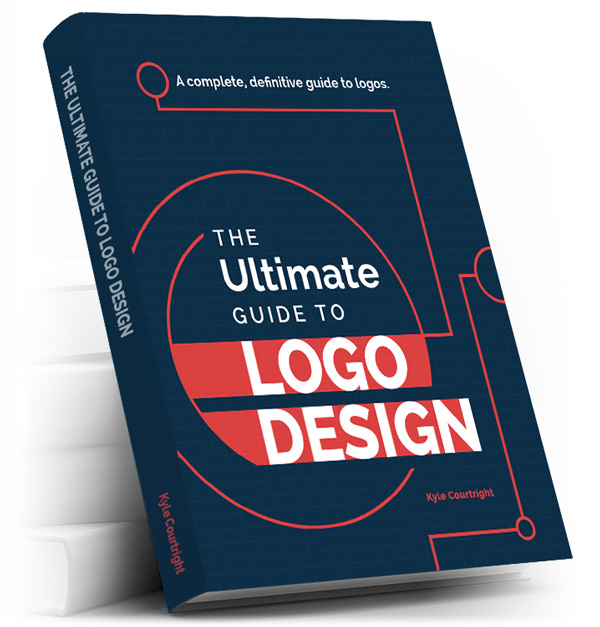
We all want to grow our business.
But how can we get our day-to-day transactions sustaining our companies to catch on and multiply like wildfire?
Small start-ups, large firms–the overall numbers might start out differently–but our goal is the same.
We plant seeds. We forge ideas. We get the infrastructure in place. We get the product or service delivered.
We are devoted. We always look at ways to get it all done more efficiently. We look at avenues to get the deliverables out better. We attract the customers. We get all the aspects of our business up and running. We go out of our way to grab our market share.
All of the actions listed above lead to beautiful, sustainable business building. That’s why we should never stop doing what it takes to run a business. But there’s an element we’re forgetting here. One that can do what a match does to a pile of tinder. One that can get your revenues to really ignite.
We’ll keep it simple here, because that’s really the best way to get it done. You’ve heard of it before. It’s not a secret. It’s just . . . branding.
That’s right. Branding. Not like, marketing or anything–though marketing is certainly important.
But that’s an important distinction. Marketing is about the skillful placement of your product or service. Branding is so much more. It’s an all-encompassing image.
Marketing is about how, where, when and why you were suddenly thirsty for that product-placed Pepsi, or why Nike convinced you to shell out all that money for those really awesome Back to the Future II shoes to go with it. Branding is all about who people think you are when you drink and wear them. (They definitely think you’re the future.)
So, in no particular order, here are thirteen ways to get your branding wildfires rolling–resulting in a blaze of roaring growth and business activity.
1. Be Unique
Ideal branding places your product, your service–your company–as a first-line association in a consumer’s mind. That’s why singularity and a sense of uniqueness really matter when it comes to your customer’s overall desire to buy into what you provide.
Turns out that the iPhone actually kind of did okay, despite being a device with many functions. (Well, at least until it hit market saturation.) This meeting of many functions wasn’t death, as some might have predicted. Turns out we kind of like having a camera, computer, phone, and calculator all in one place. It actually fathered a whole smartphone genre.
It’s a singularity–and it’s a very successful one.
2. Find your Firstness
The above point leads into this one. You need a sense of “firstness” in your field in order to really, really get your customer to latch onto. It helps them know who you are, what you do, and why you’re the only business–or at least the best business–to do it.
Do we remember Zunes as fondly as iPods? All the other bracelet colors as clearly as the “Livestrong” yellow ones?
One quick tip is to build out a referral program for your design business. You’ll not only bring in extra leads, but potential clients will be impressed with the extra lengths you took to develop such a program. The creative, outside-of-the-box representation is what you’re going for. You’re looking for the “Wow!” Sure, extra leads are always nice, but that moment you differentiate from the pack and genuinely make a positive impression on the potential prospect–now that’s invaluable.
If you are running a “me too” campaign, a campaign that just does what other campaigns do, you’re just not as likely to get noticed.
Get creative. Innovate. Differentiate.
3. Consider your similarities
This can help you find and develop the areas of your brand that can find your cross-channel markets, or the practice of using multiple channels to reach customers.
You may not actively capitalize on these in every idea, but consider the fact that if your customer report reads that 40% of the consumers of your service enjoy hiking and half of those people would download an Instagram filter add-on, that’s good news if you sell hiking boots.
You’d be ready to market in a way that truly engages your audience.
4. Be on trend
No. Don’t be trendy. Be on trend. What does this mean, exactly?
It means that you know your industry and the desires driving it–and how well they intersect with new products, services and technology.
It’s never hurt anyone’s brand for an organization to be considered a thought-leader in a field–whatever that field happens to be. It actually helps you play on a little language trick called iconicity. Ideal iconicity is a 1:1 relationship between a symbol and a tangible object. Think Kleenex. Think Xerox. You want that to be your product they’re thinking of.
Iconic branding, that is branding that automatically calls your product or service to mind in the eyes of the consumer, is even better.
This concept ties well into firstness, as we’ve already mentioned above. You’re already primed in the consumer’s mind as being excellent.
5. Go Visceral
Grab the customer where he can’t refuse. Right in the emotions. Yes. Right there. In that little pocket of feels. Right next to the base instincts.
Marketers have been doing this since the birth of the public relations industry. This type of marketing will continue on. Apply this same principle of going visceral with your own business and you’ll see those conversion rates skyrocket.
6. Go Visual
According to the CEO of Small Business Trends, you can grow your business by a pretty wide margin, just by leveraging elements of your visual marketing. Artistic photography, using cohesive design elements and stunning layouts aren’t just a way to indicate to your customer that you want to create an excellent experience for them–they’re ways to signal that you are willing to go the distance in creating a memorable impression.
Another important aspect of visuality you may want to consider: according to statistics presented on Hubspot, tweets with images also receive 18% more clicks, 89% more favorites and 150% more retweets.
So go visual. Give people a reason to remember your business by going the extra visual mile.
7. Deliver your promises
That’s the entire definition of branding according to guru Robert Bean, of Northstar Partners. He’s right. If you create a marketing campaign or branding image that rings hollow to actual user experience, your ship will sink fast.
He’s responsible for “The Power of Dreams” campaign that Honda rolled out not too long ago. The whole image he’s painted for Honda is definitely cohesive here. This particular ad has beautiful red text that moves as fast and drives as hard as the Civic CRX does, jet planes that zoom by and vehicles that hurry to stop–just so you can feast your eyes on them.
8. Listen
Your customers know when you’re tone deaf.
Your branding and your overall image should reflect any information you’ve gathered in order to serve your customer better. You can collect data measuring customer satisfaction any way you like (as long as you make it relatively painless for the consumer) but you shouldn’t ignore it if it’s not making everyone happy.
The most important part to remember is that the data is never the same twice, just like the consumer’s needs are never the same from day to day. Things get disrupted. Needs change.
That’s why you’ve got to listen actively.
9. No. Seriously. Listen.
Reading and correctly interpreting feedback is just one way to keep your customer happy. There are so many other ways you can show you are responsive to their needs through your branding.
Choices of color, imagery in campaigns, language–they’ve all been mentioned before for obvious reasons. But when they’re functioning correctly those elements take care of your customer in this way too.
They show you’re in-tune with what the customer is actually looking for as a total identity. They show you’ve taken the time out to know the needs, wants and desires of your market. They’re like a secret code–and once you’ve cracked it, you’ll inspire brand loyalty.
10. Tell your story
Every brand has a story.
Some are short. Some are long, and have a wonderful and eventful history.
All of them are important. They help “humanize” you to your customer–which doesn’t hurt. It’s easier for many people to do business with a human face. If there isn’t just one person to identify that face–a campaign featuring stories from people representative of product’s users can do very, very well.
Compelling stories always sell. But more importantly, they help you achieve that particular brand identity singularity. No other brand has your exact story. And even if they did, they couldn’t tell it the same way.
Tell it best, and you’ll be a winner.
11. Know your dialect
The language your consumer uses should be incorporated, or at least reflected, in your overall brand image.
Sounding proper is great–if you’re selling products or services to the Jones family–or people who aspire to be the Jones family. But if you’re selling to Smiths, or to a completely different market-share in another culture or country–you’ll need to find out their language and their point of view.
Consider the urban legend about the Nova. They say that in Latin America, it didn’t sell because “No va” means “Doesn’t go.” That’s a myth. That doesn’t mean there aren’t real blunders though.
It’s always best to work closely with brand consultants or copywriters with a background that shows they know how to communicate with the people you’re trying to reach.
12. Think strategically
It’s important that everyone think strategically when it comes to branding, and marketing in general. It’s what helps your company keep its competitive advantage.
According to Lauren Perkins, founder and CEO of Perks Consulting, solid research and analysis are crucial to branding strategy.
It’s easy to see why.
Strategic thinking doesn’t just keep you fresh and on top of trends–or even at the bleeding edge of technologies. It’s how you achieve a differentiation and ultimately an advantageous cornering of emerging markets.
Your branding should always reflect your strategy, especially if you’re changing what it is you provide to the consumer in response to a market innovation or disruption.
13. Think market. Growth. Penetration. Alternative channels.
That’s what you’ll need to consider in order to set your brand up for success.
If blogging, trade shows and conferences are normal opportunities for your field, try something different–like a social media campaign.
The key is to find out how to attract your target market and get them engaging with your product or service. You want them to associate you with it in a way where they can’t think of finding it anywhere else.
To be fair, it’s equally important to remember that branding isn’t everything. Splash never wins out over substance when there simply isn’t any substance to be found.
Projects that are too high-concept–ones that don’t properly consider implementation of the tangible aspects of doing business in their branding process–are so . . . pre-tech bubble. They’re old hat. Predictable.
We’ve already established that we’re living in the future.
We’re really just beginning to get a clear picture of the Internet of Things, that is the Internet of machines that communicate with machines, and what it’s shaping up to be. It’s time for our image to change along with with the times.
But when the branding is well-executed and the product or service is phenomenal–those two factors will unite to bring you and those who matter the results you crave. You’ll see their combined powers in action, just like with any other aspect of the magic brew we call User Experience. It’s beautiful when everything comes together.
How’s that for things working together? What are your ideas about growth? How do you brand with growth in mind?
Let me know in the comments below. I look forward to hearing from you!



